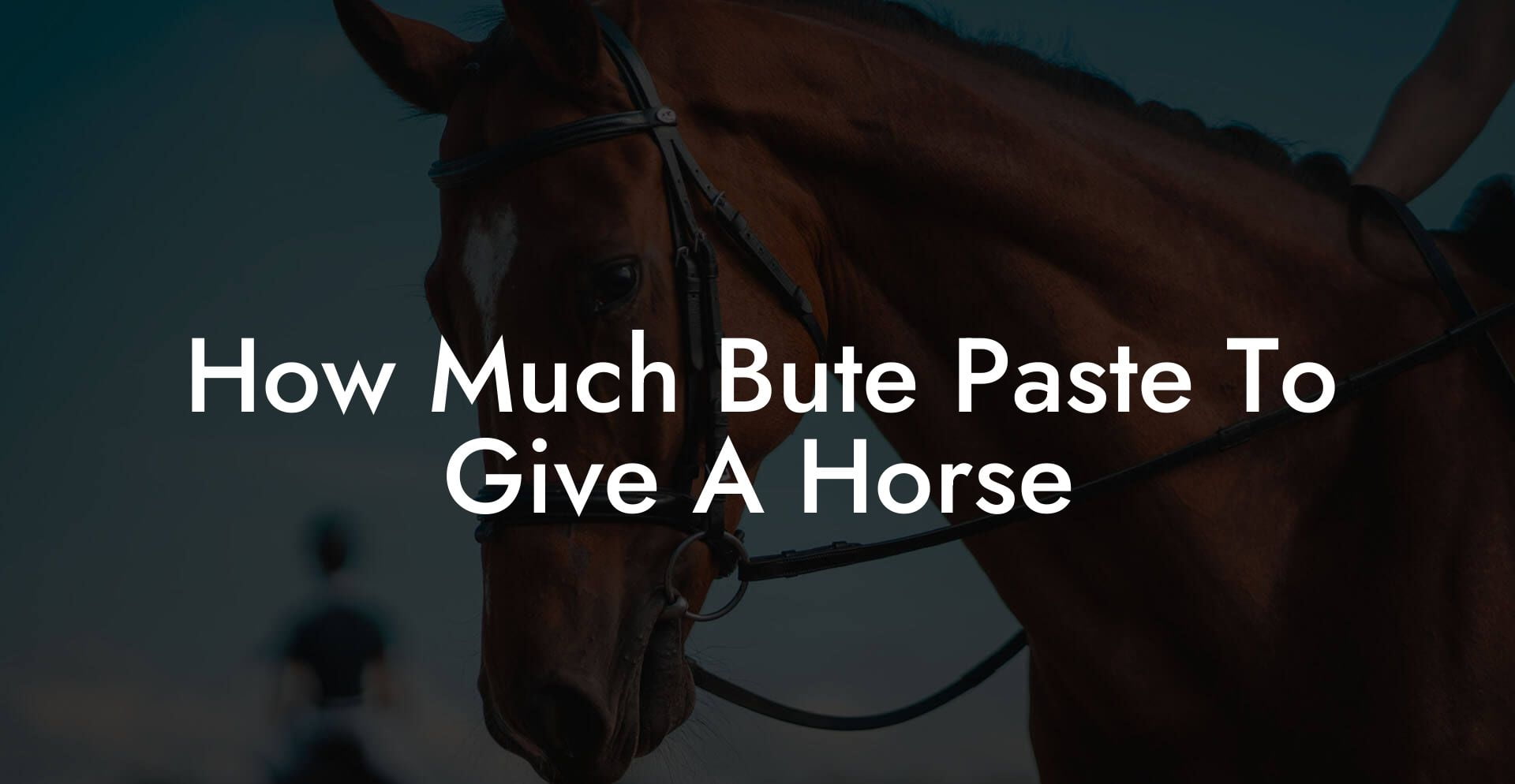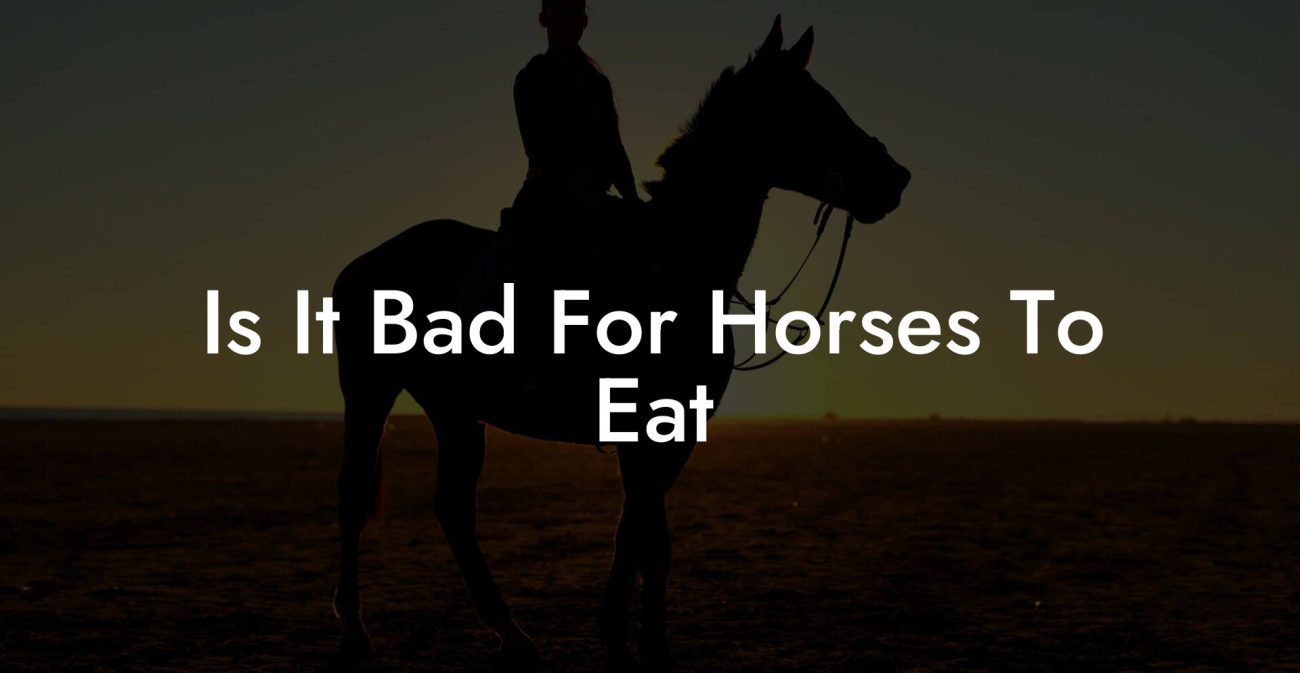Ever found yourself deep in a midnight Google rabbit hole, trying to figure out how much bute paste to give your horse, and wondering if you've just unlocked the secret to equine bliss? If you’re juggling the challenges of modern horse care with a side of quirky humor and DIY vibes, you’re in the right place. Here’s the lowdown on bute paste – what it is, how to dose it right, and why it might just be the unsung hero in your horse’s wellness routine.
Quick Links to Useful Sections
- Understanding Bute Paste: The Equine Pain-Relief Hero
- What Exactly is Bute Paste?
- The Science Behind the Soothing: How Bute Paste Works
- Determining the Right Dosage: Factors to Consider
- The Step-by-Step Guide to Administering Bute Paste Safely
- Step 1: Gather Your Supplies
- Step 2: Clean the Application Area
- Step 3: Measure the Appropriate Amount
- Step 4: Gently Massage the Paste In
- Step 5: Monitor the Area
- Understanding the Risks: When Less is More
- Integrating Bute Paste Into a Holistic Equine Care Routine
- Common Questions and Concerns About Bute Paste Usage
- How Often Should I Apply Bute Paste?
- Is Bute Paste Suitable for Long-Term Use?
- Can I Use Bute Paste on Open Wounds or Cuts?
- What’s the Best Way to Store Bute Paste?
- How Do I Recognize an Adverse Reaction?
- Case Studies: Real-Life Scenarios in Equine Pain Management
- Case Study 1: A Sprained Leg and the Miracle of Targeted Relief
- Case Study 2: Tackling Chronic Joint Inflammation
- Case Study 3: Post-Surgical Recovery with a Holistic Twist
- DIY Equine First Aid Kit: Where Bute Paste Fits In
- Integrating Modern Tech With Traditional Horsemanship
- Resources and Community Support: Your Next Steps
- Advanced Tips: Balancing Dosage and Daily Routine
- The Future of Equine Pain Management: Trends and Innovations
- Building a Tailored Equine Pain Management Plan with Bute Paste
- FAQs: Your Bute Paste Questions Answered
- Your Roadmap to Confident Equine Care
Understanding Bute Paste: The Equine Pain-Relief Hero
Picture this: your horse is strutting around like a supermodel, except every so often, a sharp discomfort reminds both of you that the rigors of riding, training, and those heroic leaps over hurdles can take a toll. Enter bute paste – a topical analgesic and anti-inflammatory often used by equestrians to manage pain and inflammation. Derived from the same wonder drug that many veterinarians swear by for horses in need (phenylbutazone is the technical term you might hear thrown around in vet clinics), bute paste is like a spa treatment you can apply right on the spot.
But don’t let its casual vibe fool you – this isn’t your garden-variety ointment. Bute paste is a potent, medicated remedy used primarily for relieving musculoskeletal pain, reducing swelling from injuries, and even as part of post-surgical care routines. Whether your horse is nursing a sore back after an intense dressage session or dealing with the effects of a minor sprain, knowing just how much bute paste to give your horse is crucial.
And let’s be honest – navigating equine care can be an intimidating blend of tradition, technique, and just plain common sense. So, if you’re a millennial or Gen Z equestrian who prefers scalable solutions and clear, concise advice over confusing jargon, let’s break it down.
What Exactly is Bute Paste?
Bute paste is a topical formulation containing the active ingredient phenylbutazone, a nonsteroidal anti-inflammatory drug (NSAID) used extensively in veterinary medicine. It’s designed to be applied directly to the skin over the affected area to deliver targeted pain relief and reduce inflammation. Unlike oral medications, which have systemic effects (and sometimes, side effects that could have you Googling “horse colic emergencies”), bute paste works locally. That means it zeroes in on the specific sore spot without sending the full dose through your horse’s entire body.
This localized treatment is particularly popular among horse owners who prefer to avoid the hassle of oral medications – which can sometimes feel like playing “Operation” with your pet – and are looking for a more direct approach. Whether your equine friend has a joint issue, a muscle strain, or the overused sore leg from a long day in the arena, bute paste is here to lend a helping hoof.
It’s also important to note that while bute paste is celebrated for its effectiveness, it’s no magic potion – proper dosage and careful administration are key to ensuring both safety and real relief.
The Science Behind the Soothing: How Bute Paste Works
At its core, bute paste functions by inhibiting the enzymes responsible for inflammation. When your horse overexerts itself or sustains a minor injury, inflammatory chemicals flood the affected area, causing pain and swelling. Bute paste steps in to block these enzymes, signaling a reduction in inflammation and, in turn, relieving pain.
One of the reasons bute paste is particularly revered in equine circles is its ability to offer quick, localized relief without the need for systemic dosing – meaning fewer side effects and better management of specific injuries. This is why it’s often the go-to treatment for soft tissue injuries and joint inflammation.
That said, it’s important to remember that bute paste isn’t suitable for every situation. It’s meant for temporary relief and should always be used with the guidance of a veterinarian. Always have a professional’s opinion when it comes to medicating your horse, because even the most spectacular paste can be misused if you're not careful.
Determining the Right Dosage: Factors to Consider
Now that you know what bute paste is and how it helps, the million-dollar question is: “How much bute paste do I give my horse?” Unfortunately, there isn’t a one-size-fits-all formula – the correct dosage depends on several key factors, including:
- Your Horse’s Weight: Just like with human medications, the dose is typically related to body weight. A larger horse may require a slightly higher dose to achieve the same therapeutic effect as a smaller horse.
- The Severity of the Pain or Inflammation: If your horse is dealing with a mild flare-up, a smaller amount might suffice. More intense pain or inflammation might require a bit more, but always under vet supervision.
- Concentration of the Bute Paste: Different brands and formulations might have varying levels of the active ingredient. Reading the label and understanding these specifics is crucial.
- Overall health & Age: Older horses or those with underlying health issues may be more sensitive to medications, demanding a more cautious approach.
- Application Frequency: How often you apply the paste also matters. Overuse can lead to skin irritation or systemic side effects.
As a starting point, many equine professionals advise a thin, even coat over the affected area – not a gloppy slab, but enough to create a protective, soothing layer. Remember, a little goes a long way, and more is not always better.
The golden rule? Always refer to the product’s label and your veterinarian’s recommendations. That way, you’re ensuring that your four-legged friend gets just the right amount of TLC without any unwanted surprises.
The Step-by-Step Guide to Administering Bute Paste Safely
Administering bute paste may sound as daunting as performing a high-wire act without a net, but with the right steps, you can do it like a seasoned pro. Here’s your step-by-step guide to applying bute paste safely and effectively:
Step 1: Gather Your Supplies
Before you dive in, make sure you have everything you need: the bottle or tube of bute paste, clean gloves, some lint‐free cloths, and plenty of patience. Trust us, a little prep work goes a long way.
Step 2: Clean the Application Area
Hygiene is key. Wash the affected area with mild soap and water to remove any dirt or debris that might interfere with the paste’s absorption. Pat it dry with a clean towel – no need for a heavy-duty hairdryer, keep it gentle!
Step 3: Measure the Appropriate Amount
Refer back to your dosage guidelines or your vet’s instructions. Squeeze out a small, pea-sized amount (or however much your vet has recommended) onto your glove or directly onto the area.
Step 4: Gently Massage the Paste In
Using circular motions, massage the paste into the skin over the painful or inflamed area. This helps with absorption and ensures that the medication is distributed evenly. Be gentle – your horse’s skin is sensitive, and rough handling can lead to irritation.
Step 5: Monitor the Area
After application, keep an eye on the area for any signs of an adverse reaction, such as excessive redness, swelling, or discomfort. If you notice anything unusual, remove the paste and contact your vet immediately.
By following these steps, you’re not only ensuring that your horse gets the best possible dose but also fostering good habits when it comes to equine self-care. It’s all about precision, patience, and a dash of common sense.
Understanding the Risks: When Less is More
While bute paste is celebrated for its targeted relief, it isn’t entirely free of risks. Overuse or incorrect dosing can lead to some not-so-fun side effects, which might include:
- Skin Irritation: Excess ointment or improper application can result in redness, itching, or sores on the horse’s skin.
- Systemic Effects: Although designed for local use, too much bute paste can sometimes lead to systemic absorption, potentially causing issues such as gastrointestinal upset or kidney problems.
- Masking More Serious Conditions: Relying on bute paste without proper diagnosis might mask deeper issues that require comprehensive veterinary care.
The take-home message? Moderation is key. Following dosage recommendations and scheduling periodic breaks from topical therapies can help avoid these pitfalls. And, of course, regular check-ins with your veterinarian ensure that you’re staying on track.
Remember, a happy, healthy horse is one whose discomforts are managed carefully. Bute paste is just one tool in your equine care toolkit – make sure it’s being used appropriately, and don’t hesitate to ask the pros when in doubt.
Integrating Bute Paste Into a Holistic Equine Care Routine
Sure, bute paste is a game-changer for temporary pain relief, but it works best when it’s part of a broader, holistic care routine. Modern horse care isn’t just about patching up symptoms, it’s a lifestyle aimed at maintaining overall vitality and preventing injuries before they even occur.
Integrating bute paste into your routine might look like this:
- Regular Physical Checks: Routinely inspect your horse’s legs, joints, and overall gait. Early detection of soreness means early intervention.
- Balanced nutrition: Feed your horse a diet tailored to its energy needs, plenty of hay, grains, and appropriate supplements help keep joints and muscles in top condition.
- Structured Exercise: From light trail riding to controlled arena work, regular exercise strengthens muscles, improves joint mobility, and ultimately reduces the likelihood of severe inflammation.
- Rest and Recovery: Just like you need downtime after a long day at work, your horse needs adequate rest. Periods of recovery, sometimes supplemented by therapeutic modalities like cold therapy or massage, help maintain overall health.
- Preventative Care: Routine visits by a veterinarian or an equine chiropractor can catch issues early before they become major concerns.
And here’s a cool tip for our tech-savvy Gen Z and millennial riders: there are plenty of apps designed for tracking your horse’s health and exercise routines. These nifty tools can help you monitor when your equine buddy might need a little extra care, including the right time to use bute paste.
The best care regimen is one that’s tailored to your horse’s specific needs. By combining the precision of targeted treatments like bute paste with a comprehensive lifestyle approach, you’re setting the stage for not just recovery, but optimal, long-lasting health.
Common Questions and Concerns About Bute Paste Usage
Even the most seasoned equestrians sometimes grapple with dosage dilemmas and application uncertainties. Let’s address some of the most common questions around using bute paste:
How Often Should I Apply Bute Paste?
While frequency can vary based on the specific product and your horse’s condition, most guidelines suggest applying bute paste 1-3 times daily on the affected area. However, it’s essential to follow the instructions on the label and your veterinarian’s advice to avoid overuse.
Is Bute Paste Suitable for Long-Term Use?
Bute paste is generally intended for short-term relief of acute symptoms. Prolonged usage without proper veterinary supervision can lead to unintended side effects. Using it intermittently as part of a broader care regimen is usually the safest route.
Can I Use Bute Paste on Open Wounds or Cuts?
No, bute paste should not be applied to broken or irritated skin. Doing so could lead to further irritation or even systemic absorption. Always ensure the area is intact and clean before application.
What’s the Best Way to Store Bute Paste?
Store your bute paste in a cool, dry place away from direct sunlight. Extreme temperatures can degrade the formula and reduce its effectiveness, so a stable environment is key to maintaining its potency.
How Do I Recognize an Adverse Reaction?
Signs of an adverse reaction include excessive redness, swelling, or unusual behavior from your horse (like increased sensitivity to touch in the pasted area). If you observe any of these signs, remove the paste immediately and consult your veterinarian.
By staying informed and attentive, you can ensure that your horse benefits from bute paste safely and effectively.
Case Studies: Real-Life Scenarios in Equine Pain Management
It’s always easier to understand how something works when you see it in action. Here are a few case studies that highlight the journey of using bute paste to manage equine pain and inflammation:
Case Study 1: A Sprained Leg and the Miracle of Targeted Relief
Bella, a spirited mare known for her fiery personality, suffered a minor sprain during a nighttime training session. Her owner, a first-time rider with a penchant for research, decided to incorporate bute paste into her recovery plan. After cleaning the affected area and applying a thin layer of bute paste, Bella’s limping quickly gave way to a smoother gait. Within days, her pain subsided, and the targeted relief allowed her to resume gentle exercise without systemic side effects.
Case Study 2: Tackling Chronic Joint Inflammation
Rocky, a seasoned gelding with years of competitive experience, began showing signs of chronic joint inflammation. Despite regular maintenance and nutrition, his discomfort seemed to increase during cold weather. Introducing bute paste as a supplementary treatment – applied in moderation to the inflamed joints – provided him with the additional relief needed to manage daily activities. Paired with rest and a revised exercise routine, Rocky’s overall liveliness improved, proving that sometimes a little targeted care is all it takes.
Case Study 3: Post-Surgical Recovery with a Holistic Twist
After undergoing a minor surgical procedure, Daisy required a careful balance of healing and mobility. Her veterinarian recommended a cautious application of bute paste right after the surgery to reduce inflammation and ease post-operative pain. Over the following weeks, her owners carefully tracked her recovery and integrated physical therapy alongside controlled doses of the paste. This holistic approach not only accelerated her healing but also helped prevent any lingering inflammation. Daisy’s journey underscores how vital it is to follow professional guidance when using medications like bute paste.
These real-life scenarios remind us that while bute paste is a powerful tool for managing equine pain, it works best when embedded in a comprehensive, well-monitored care plan.
DIY Equine First Aid Kit: Where Bute Paste Fits In
Every horse owner worth their salt has a well-stocked first aid kit for unexpected mishaps. In your kit, bute paste should sit right alongside other vital supplies like antiseptics, bandages, and cooling gels. But how do you integrate it properly?
When it comes to minor injuries and localized inflammation, bute paste is your quick-response hero. It’s best used as an adjunct to proper wound cleaning and rest. Keep a record of when and where you apply it, and always note the time and dosage to avoid overuse. Remember, your kit is only as effective as your understanding of each component, so a little extra research and careful planning are key.
Think of it as the artisanal remedy in your collection – not the end-all, be-all, but a vital piece when used correctly. Always store it safely, check its expiration date periodically, and educate everyone handling your equine care on its proper use. After all, good prep work is half the battle won.
Integrating Modern Tech With Traditional Horsemanship
In today’s digital age, even traditional practices like equine care are getting a tech upgrade. Imagine combining the age-old wisdom of horsemanship with the precision of modern digital tracking. Many smart devices and mobile apps now help you monitor your horse’s health – from activity levels to recovery progress.
Apps like EquiTrack or MyHorseDiary allow you to log every detail of your horse’s wellness routine, including the application of bute paste. Input dosage amounts, note any reactions, and even set reminders for re-application or veterinary check-ups. This harmony of tradition and technology ensures that not only is your horse receiving the best care possible, but you’re also building a comprehensive health record that can be invaluable during vet visits.
Embracing modern tech doesn’t detract from the cowboy (or cowgirl) spirit, it enhances it. With tools that simplify tracking and monitoring, you’re empowered to make informed decisions about your horse’s care, and you can truly appreciate the blend of art and science that goes into modern equine management.
Resources and Community Support: Your Next Steps
Embarking on an informed journey into equine care means you’re never alone. Join forums, social media groups, and local equestrian clubs where you can swap stories, ask for advice, and share your experiences about administering bute paste. Platforms like The Horse Forum, Equine Nation, and even specialized Facebook groups can provide invaluable support.
In addition, don’t underestimate the power of webinars and online workshops. Many veterinarians and equine professionals offer free or low-cost virtual sessions where you can learn more about proper dosing, administration tips, and even the latest research on pain management for horses.
Also, consider keeping a digital journal or blog about your experiences. Documenting your journey can not only help track progress but also contribute to a community of peers who are navigating similar challenges. You might just become the go-to resource for others looking for real, no-nonsense guidance on horseback care.
Your next steps are simple: connect with fellow equestrians, continuously educate yourself, and always consult with your veterinarian before making any changes to your horse’s treatment protocol. In the world of horse care, community knowledge and shared experiences are as valuable as any product on the shelf.
Advanced Tips: Balancing Dosage and Daily Routine
For those of you who thrive on detailed optimization and precision, here are some advanced tips to help balance your horse’s bute paste dosage with its daily routine:
- Rotational Therapy: If your horse experiences recurring areas of inflammation, consider a rotational approach. This means alternating between bute paste and other therapeutic modalities (like cold therapy or herbal balms) to prevent overexposure and maintain efficacy.
- Environmental Adjustments: Integrate your bute paste regimen with environmental modifications. Ensure your horse’s stall is comfortable, clean, and free of irritants that might exacerbate inflammation.
- Timing is Everything: Schedule applications around your horse’s exercise routines. Applying the paste after a session ensures that any inflammation caused by exertion is addressed promptly, while also reducing the risk of the medication being wiped off by sweat or wind.
- Customized Application Zones: For horses with multiple problem areas, work with your veterinarian to create a targeted plan. This might mean slightly adjusting dosages for different spots, based on sensitivity and size.
- Keep Detailed Logs: Maintain a log of each application, dosage, the horse’s response, and any side effects observed. Over time, this log becomes an essential tool for fine-tuning your horse’s care routine.
These strategies aren’t just for perfectionists – they’re for anyone who wants to ensure that every swipe of bute paste works effectively, paving the way for a balanced, healthier life for your horse.
The Future of Equine Pain Management: Trends and Innovations
Looking ahead, the world of equine health is evolving rapidly. With innovations in veterinary science and a push towards integrative, holistic approaches to animal wellness, treatments like bute paste are being reexamined and refined continuously.
Research is expanding into alternative delivery methods, such as transdermal patches and slow-release formulations that could one day minimize the need for frequent applications. There’s also a growing trend towards using natural, plant-based alternatives that offer similar anti-inflammatory benefits without harsh chemicals.
For the modern equestrian, staying updated on these trends isn’t just smart, it’s essential. Follow veterinary journals, register for industry webinars, or even join online courses that cover the latest in equine pain management. By staying informed, you not only improve your horse’s quality of life but also become part of a community leading the charge towards innovative, humane, and effective care.
Building a Tailored Equine Pain Management Plan with Bute Paste
Crafting a personalized plan involves a harmonious blend of traditional care, modern technology, and intuitive observation. Begin with a thorough veterinary check-up to assess your horse’s overall health and identify specific areas that could benefit from targeted relief.
Next, combine this clinical insight with your real-world observations. Track your horse’s activity levels, note any patterns in discomfort, and use this data to tailor the bute paste dosage and application schedule. Whether you’re fighting off inflammation from training sessions or managing the subtle aches of aging, your plan should be as dynamic and flexible as your horse’s needs.
Finally, integrate other supportive measures – proper nutrition, well-timed exercise, adequate rest, and periodic professional evaluations. This holistic approach not only magnifies the effectiveness of bute paste but also lays the groundwork for sustained equine health.
Your journey towards a finely tuned equine pain management plan is ongoing. Stay curious, keep experimenting (safely!), and don’t be afraid to reach out to the community for insights and suggestions.
FAQs: Your Bute Paste Questions Answered
We’ve all been there – a quick search leaves you with a pile of questions. Here’s a handy FAQ to clear up common doubts about using bute paste for your horse.
1. How do I determine the right amount of bute paste for my horse?
The correct dosage primarily depends on your horse’s weight, the severity of the injury or inflammation, and the specific concentration of the paste. Always refer to the product label and consult your veterinarian to ensure accurate dosing.
2. How often can I apply bute paste?
Generally, bute paste may be applied 1-3 times a day depending on your horse’s specific needs and the product’s recommendations. Too frequent use can lead to skin irritation or increased risk of systemic absorption.
3. Can bute paste be used on all types of injuries?
Bute paste is ideal for localized pain and inflammation, especially in cases of muscle strain or minor joint discomfort. It should not be used on open wounds or severe injuries without veterinary guidance.
4. Are there any side effects associated with bute paste?
While targeted in its action, potential side effects include skin irritation, allergic reactions, or, if overused, systemic effects such as digestive upset. Always monitor your horse after application and consult a vet if unusual symptoms arise.
5. How should I store bute paste?
Keep bute paste in a cool, dry place, away from direct sunlight. Proper storage helps maintain its potency and effectiveness over time.
6. Is it safe to mix bute paste with other topical treatments?
Mixing treatments without guidance can be risky. Consult your veterinarian before combining bute paste with other medications or therapies.
7. How quickly can I expect to see results?
Results vary depending on the individual horse and the nature of the injury. Many owners report noticeable improvement within a few hours to a couple of days, though chronic issues may require a longer period of treatment.
8. Can I use bute paste as a preventive measure?
While it’s excellent for managing acute symptoms, bute paste is not typically recommended as a preventive or long-term solution. It’s best used as part of a balanced treatment strategy that includes regular care and monitoring.
9. What should I do if my horse has a reaction to bute paste?
If you notice any signs of an adverse reaction, such as redness, swelling, or unusual behavior, remove the paste immediately and contact your veterinarian.
10. Can I apply bute paste without veterinary supervision?
It’s always best to consult with your veterinarian before starting any new treatment. Their guidance ensures that the paste is suitable for your horse’s specific condition and that it’s used safely.
Your Roadmap to Confident Equine Care
Navigating horse care in the modern world requires a blend of knowledge, intuition, and a willingness to adapt. With bute paste as part of your equine first aid kit, you’re equipped to handle those moments when your horse needs a bit of extra love. By understanding the science, following precise dosing guidelines, and integrating bute paste into a broader holistic care routine, you’re setting the stage for a healthier, happier horse.
Take a deep breath, trust your instincts, and use the tools and tips outlined here to master the art of equine care. Your horse isn’t just a companion, they’re a vibrant, living being who deserves the very best in pain management, care, and attention. As you continue your journey, remember: every horse and every situation is unique. Keep learning, stay observant, and lean on the community of fellow equestrians for support.
Now, go ahead and rock that confident, informed approach to administering bute paste, and watch as your horse transforms into their happiest, healthiest self. Whether you’re a seasoned rider or just starting your equestrian adventure, the key to success is knowledge, careful application, and a well-rounded care plan – because your horse deserves nothing less.













